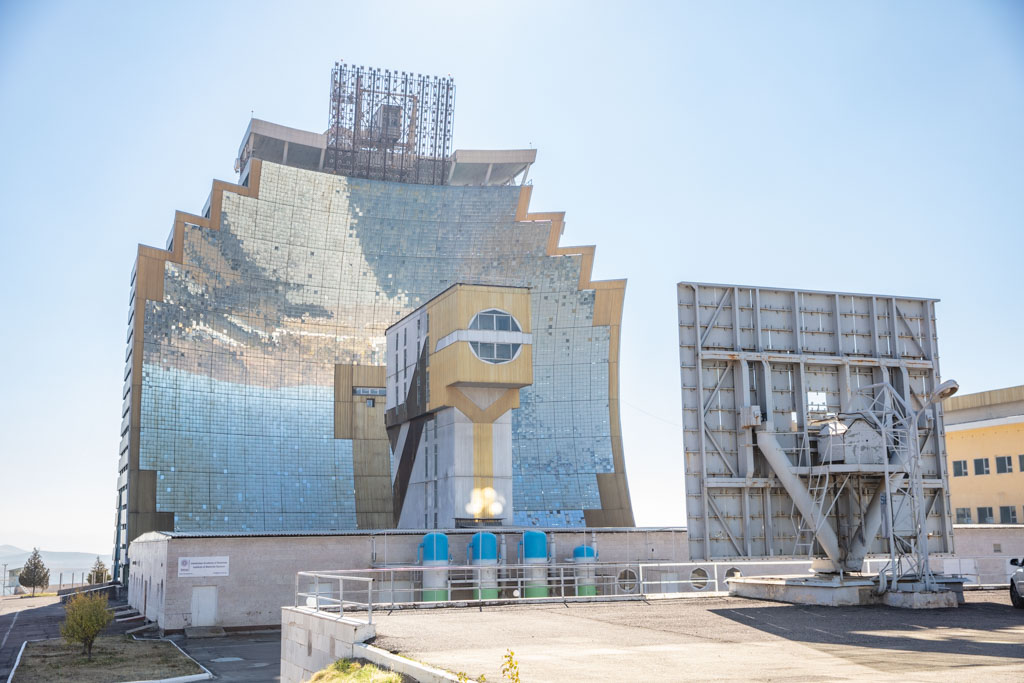
Visiting the Solar Furnace in Parkent, Uzbekistan
Updated December 2023, Visiting the Solar Furnace in Parkent, Uzbekistan was originally published in January 2022
On my most recent trip to Tashkent in the fall of 2021, I finally made a day trip out to the bizarre architectural and scientific feat of the Solar Furnace in nearby Parkent, Uzbekistan. The Solar Furnace was actually on my to-do list during my May 2021 visit, but my time in Tashkent fell over the weekend (Sunday) and foiled my ability to visit while the complex was operating and open.
The Solar Furnace was a top-secret Soviet lab and remained highly protected and shrouded in mystery until 2009. These days, visitors can now turn up and tour the facilities with the scientists who work at the Solar Furnace- a marked change from the secrecy of the past.
Need Travel Insurance and Evacuation Services for Uzbekistan?
Start shopping for travel insurance plans over at IATI Insurance. Readers of the Adventures of Nicole get a 5% discount off your plan.
The Adventures of Nicole partners with Global Rescue to offer the world’s leading medical evacuation and security advisory services. To travel with peace of mind, shop evacuation coverage at Global Rescue.
Stay online across Uzbekistan
Rent a UZWifi mobile pocket router
Looking for more ideas to add to your Tashkent itinerary? Check out the Tashkent Travel Guide
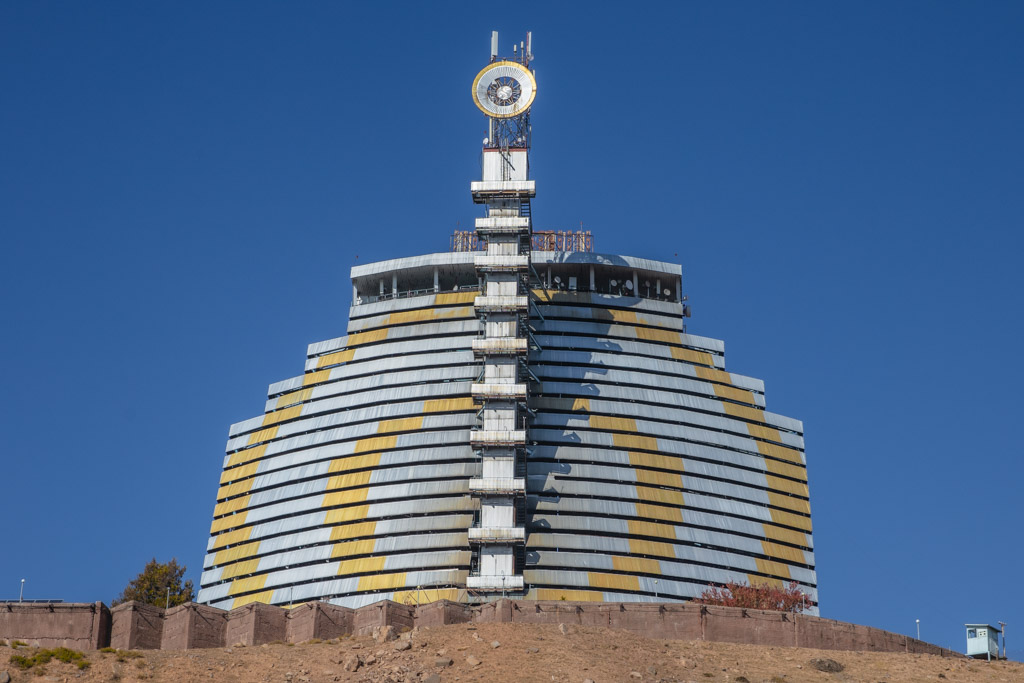
What is the Solar Furnace & How Does it Work?
The Solar Furnace of Uzbekistan (also called the Institute of the Sun or the Heliocomplex) is a unique building that was constructed to create clean and pollutant-free heat that could be used as energy (during the Soviet era this energy was mainly used to create weapons parts and refractory materials for the aerospace industry, hence the secrecy).
Essentially, the Solar Furnace complex functions as a parabolic reflector that uses 10,700 mirrors that create the 54-meter high concave concentrator that bounces light from 62 heliostat mirror panels arranged in rows on a hill into the actual furnace to achieve the 3,000ºC temperatures needed to liquify steel, iron, and even titanium.
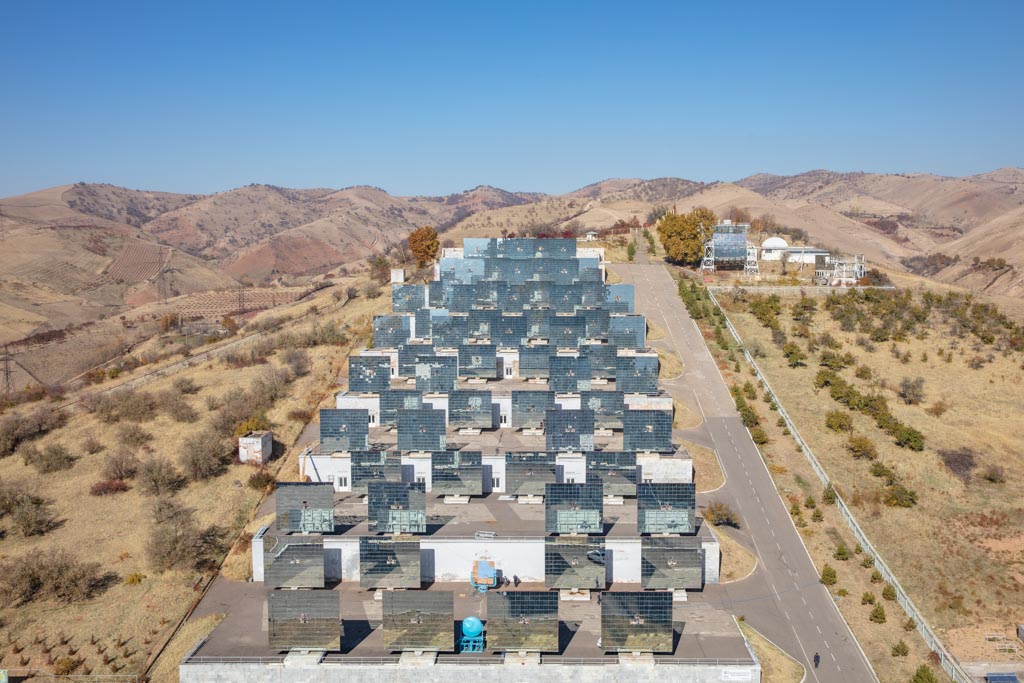
The Heliocomplex is an impressive feat of engineering with how it functions and what it produces. The 62 heliostats (flat mirrored panels), on the hill opposite the concentrator mentioned previously, are automatically controlled to swivel in unison, tracking the sun in order to reflect light energy to the concentrator, which then reflects the light into the furnace (also called the manufacturing tower).
From the 6th floor of the concentrator, the Solar Furnace of Uzbekistan is controlled by the 160 laboratory employees hard at work to make sure the mirrors are always following the sun.
Start planning your trip: The Uzbekistan Travel Guide
Grab a copy of Bradt’s Uzbekistan Guidebook to help plan your visit
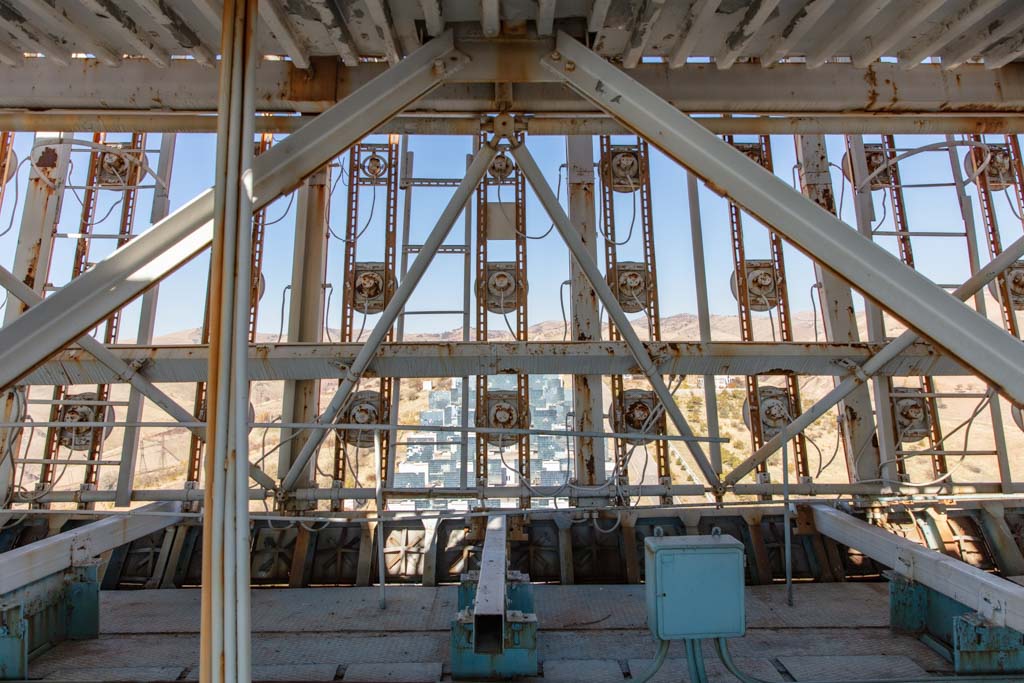
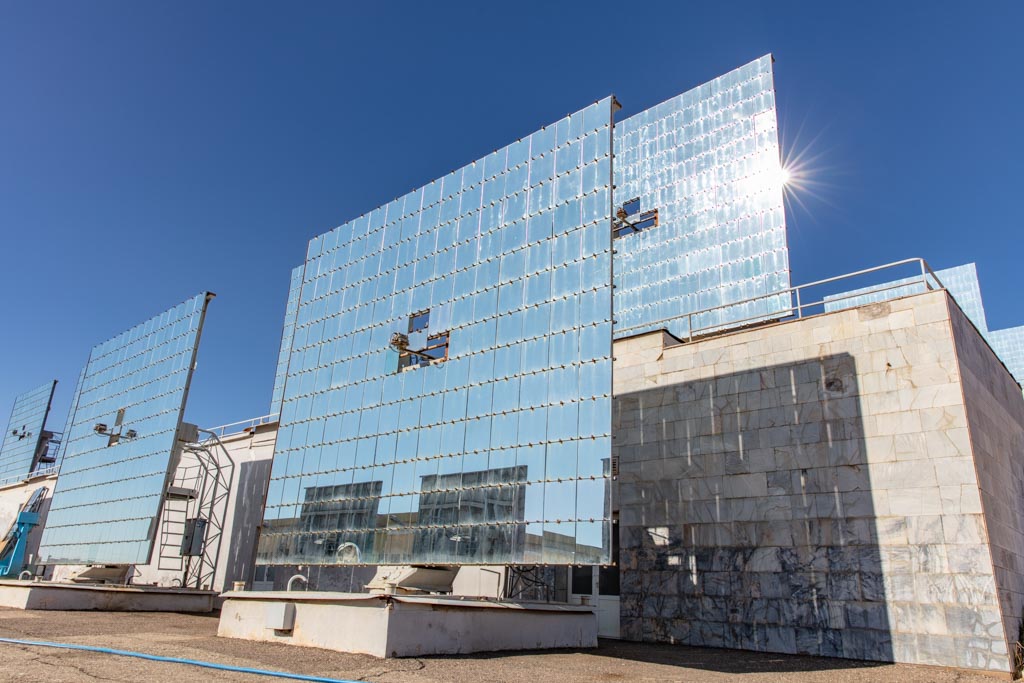
How is the Energy Created by the Heliocomplex Used?
The heat energy produced by the Solar Furnace of Uzbekistan is mainly used these days to test the effects of high heat on various materials, in the production of hydrogen fuels, scientific experiments, creation of new types of ceramic, and for foundry purposes.
The Heliocomplex is known to create clean and pollutant-free solar energy, giving it an advantage over other types of furnaces, such as those that are fuel or coal-powered that create impurities.
Don’t miss the beautiful Tashkent Metro Stations

Why was Parkent Chosen?
For the Heliocomplex to be able to create thermal energy, the location of the Solar Furnace had to be strategic, in a place with ample sunshine throughout the year.
Given Parkent’s location in relation to Tashkent, plus the fact it was deemed the location with the most sunlight and clearest skies by the Soviets as it gets on average 270 days of sun per year made Parkent the ideal location for such a complex.

How did the Solar Furnace Come to be?
The Solar Furnace’s history dates back to 1940 when the Physical-Technical laboratory opened its doors in Tashkent. That laboratory was remolded in 1943 to become the Physicotechnical Institute.
By the 1950s, Sadik Azimov, an Uzbek scientist founded the Laboratory of Cosmic Rays at the Physicotechnical Institute to focus his works on nuclear physics. Another 20 years later, and Sadik Azimov was developing renewable energy sources, and thanks to his works the Solar Furnace of Uzbekistan was born.
Construction began on the Solar Furnace back in 1981, with the research facility completed in 1986 and the Physics-Sun Research and Production Association formed. In 1987 the Solar Furnace officially opened.
Need ideas? Check out this two week Uzbekistan itinerary
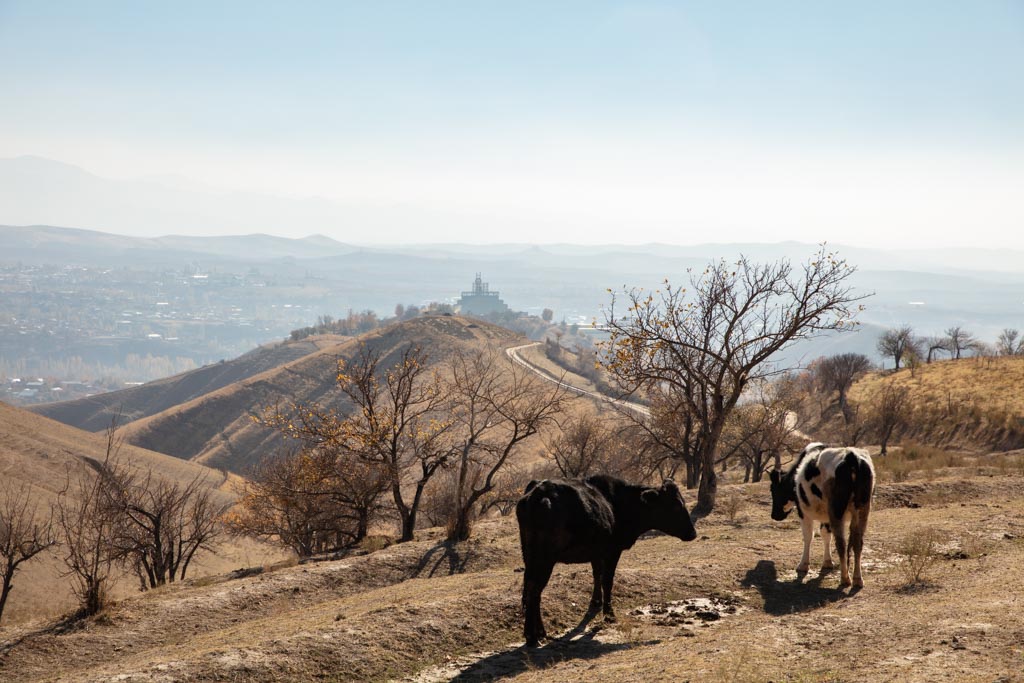

How to get to the Solar Furnace of Uzbekistan
I would honestly recommend hiring a Yandex Taxi and making a day trip to the Heliocomplex (unless you have your own wheels) as it’s the easiest way to get to and from, and still pretty cheap if you are splitting the cost with another traveler or two. You can expect to pay about 200,000 UZS (roughly $20 USD) for a return trip to the Solar Furnace and back to Tashkent, but you will need to factor in the drivers’ waiting time for you while you explore the Heliocomplex (about 25,000 UZS per hour wait time).
If you’re trying to get to the Solar Furnace on the cheap-cheap, you can grab a marshrutka from Tashkent to Parkent, though I would recommend asking at your accommodation where to head to find them (sorry guys, I caught a ride with a good friend out there so we had our own transportation). Once in Parkent, you’ll get dropped at the bazaar along the main road where you can find a taxi to drive you to the nearby village of Quyosh that the Solar Furnace is located uphill from. Of course, you could always walk from Parkent too- just know that it’s another 7 kilometers from there.
Read up more on strange sites around Uzbekistan: The now-demolished secret lab of Aralsk 7 on a dead island in the Aral Sea

The Tour of the Institute of the Sun
We arrived at the entrance to the Solar Furnace around 1 pm. A man working at the gate called the researchers to let them know some visitors had arrived.
We were met by Javohir Zafarovich, a Ph.D. in technical science, who would give us a grand tour of the facility. Javohir has worked at the Institute of the Sun for over 20 years.
Javorhir first brought us to a miniature parabolic concentrator where he held up a stick with a pinecone tied to it to show us that within just a few seconds that the light energy from the concentrator would light the pinecone aflame.
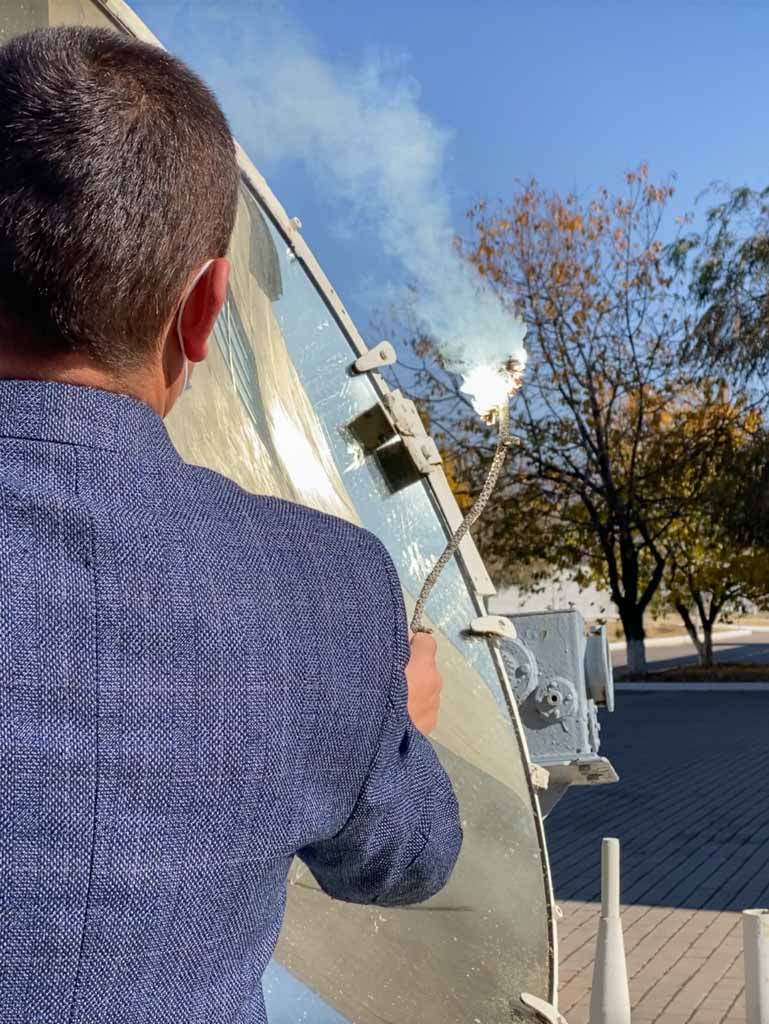
After the demonstration, we went into the museum, located on the west side of the complex to watch an informative video and look at various models. The Solar Furnace Museum even features beautiful artwork inside.
The museum is housed in a large facility building that also features a bomb shelter- a common feature of many scientific research facilities of the USSR.
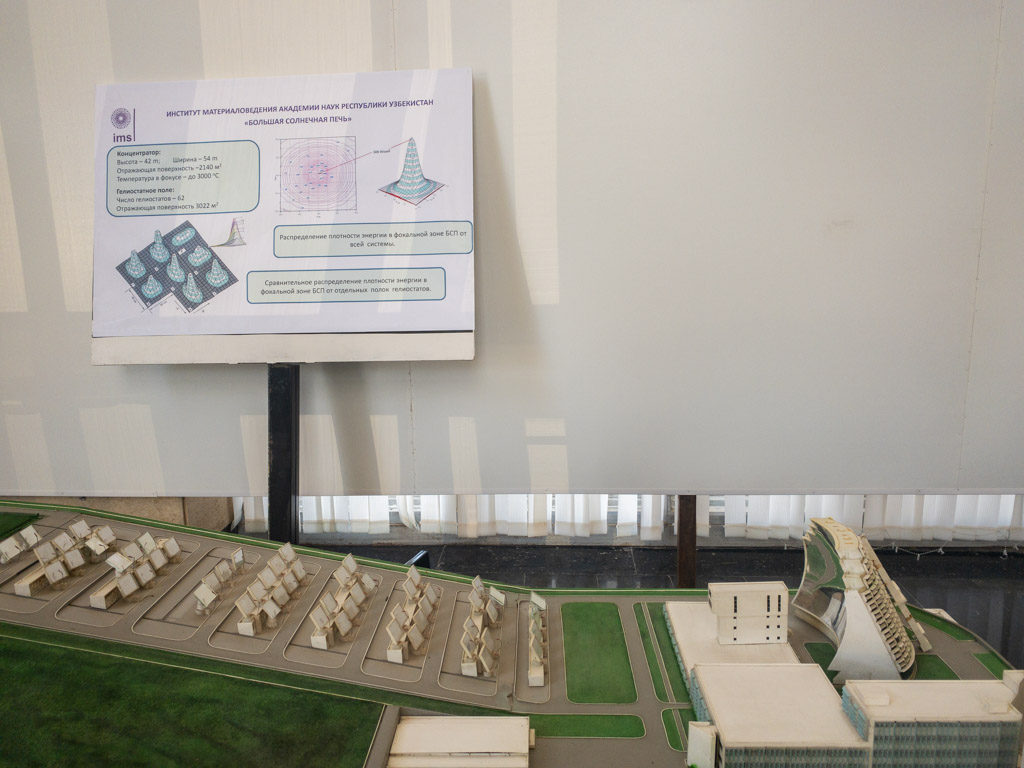
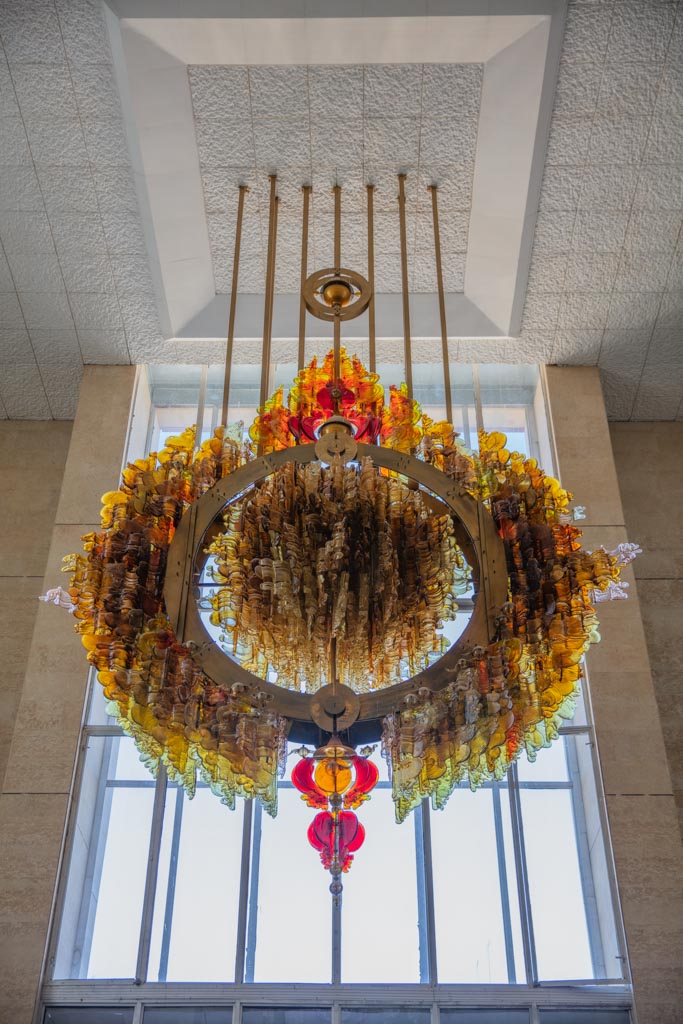
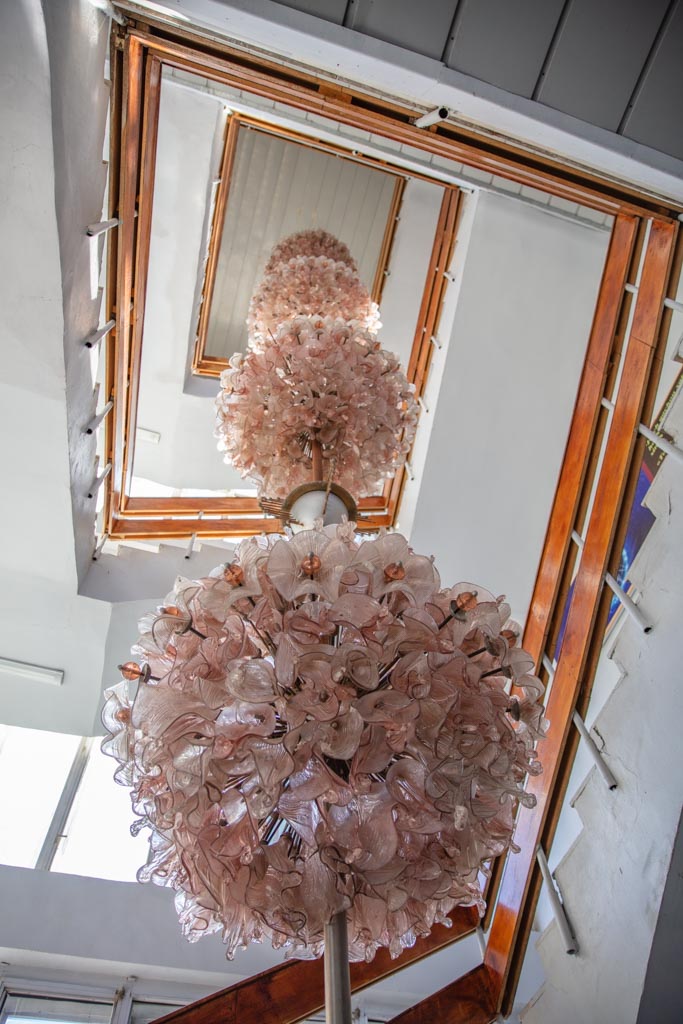
We then headed outside to see the Solar Furnace in action, walking around the massive parabolic concentrator.
Following, we then went inside the concentrator to take an elevator up to the observation deck for sweeping views of the Chatkal Range as well as the tiered hillside full of gleaming heliostats.
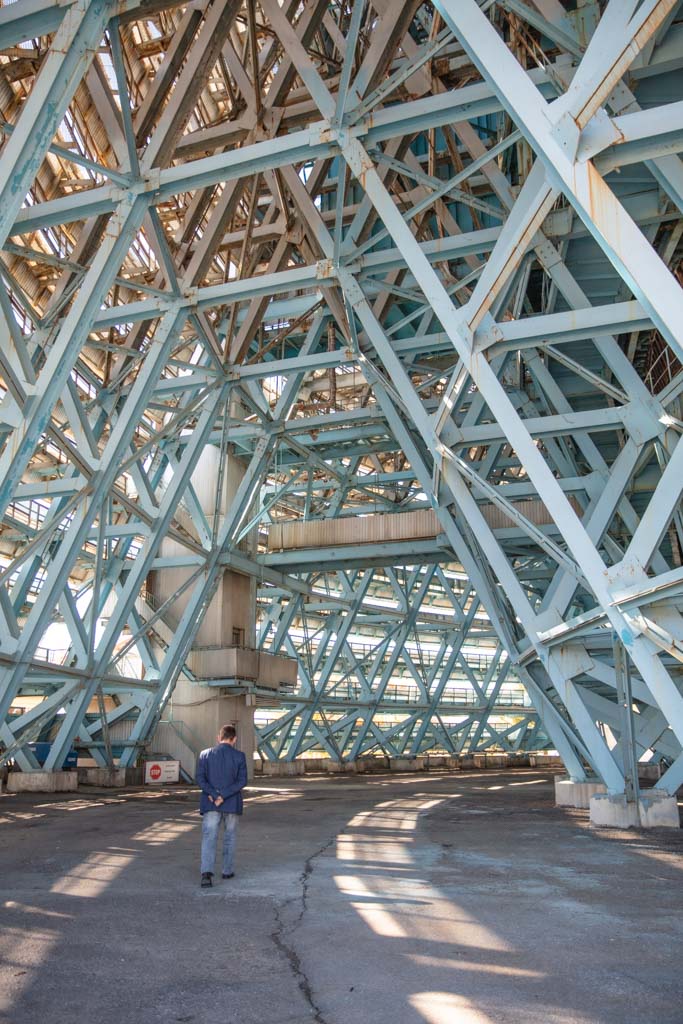
Finally, we toured around the heliostat field where we could see faculty at work on one of the heliostats and others tinkering with a miniature concentrator as they experimented with melting various materials.
Continuing north from Parkent? Learn more about the Uzbek Fergana Valley and plan your visit

Costs, Hours, and Contact Info
The entrance fee for the Solar Furnace is 50,000 UZS per person, plus a 150,000 UZS fee for the tour itself (entire group). The facility is open from 8 am to 5 pm, Monday-Friday.
You can call ahead to arrange a visit at +998 707225300 and to find out more info about the Heliocomplex. You can also visit the website for the Institute of the Sun for more information.
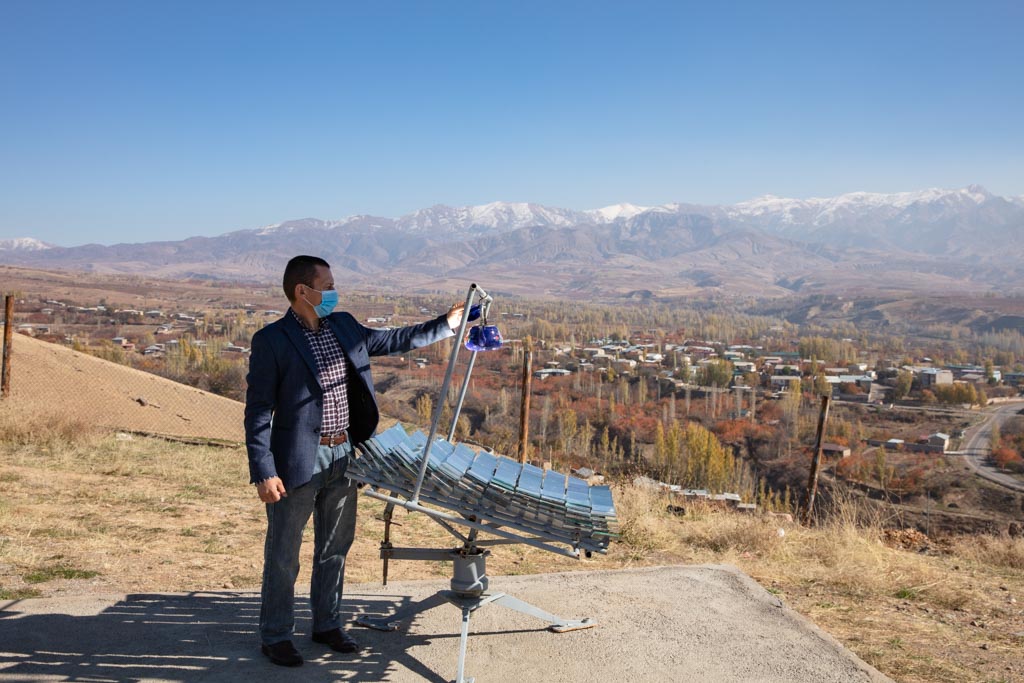
Have any questions about visiting the Solar Furnace of Uzbekistan?
Ask in the comments section below.
More posts from Uzbekistan:
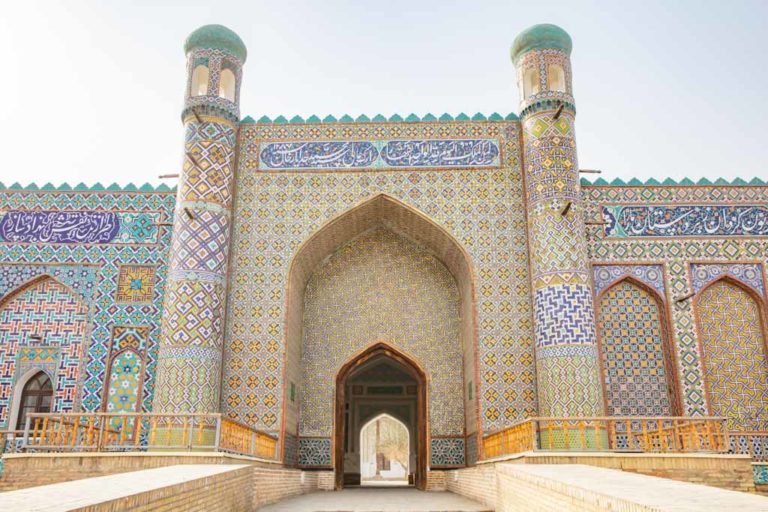
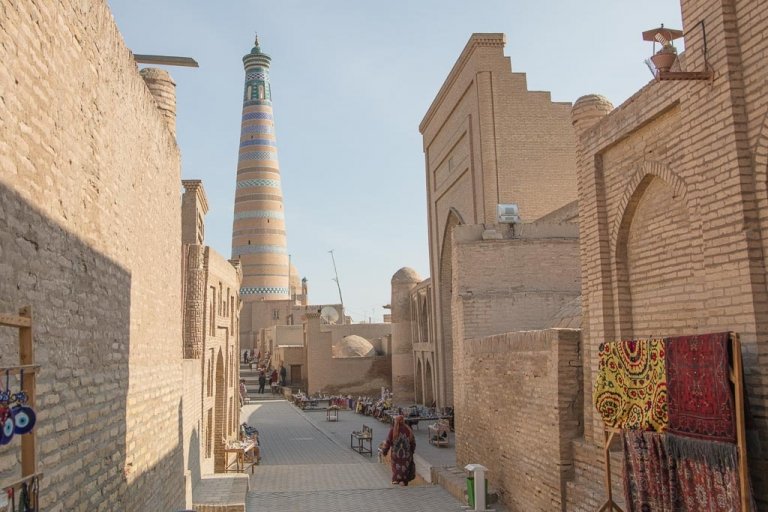

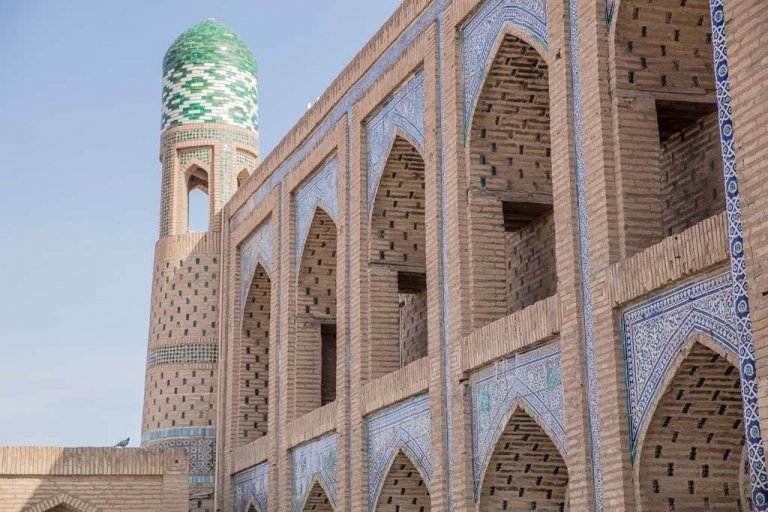

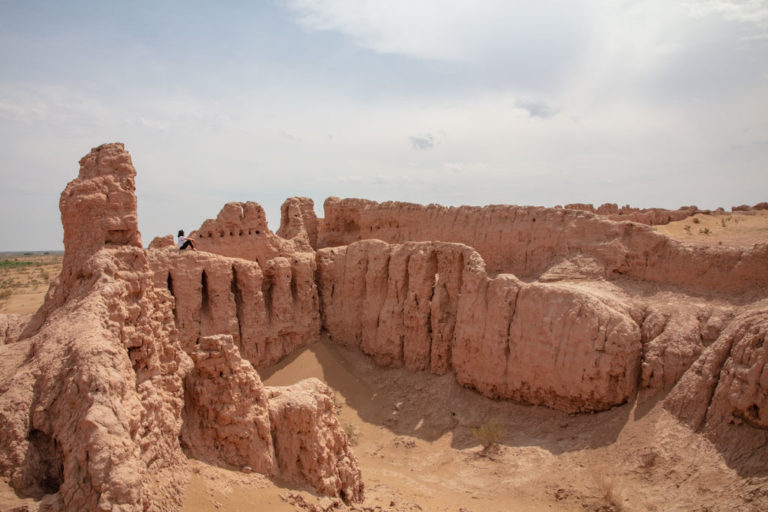
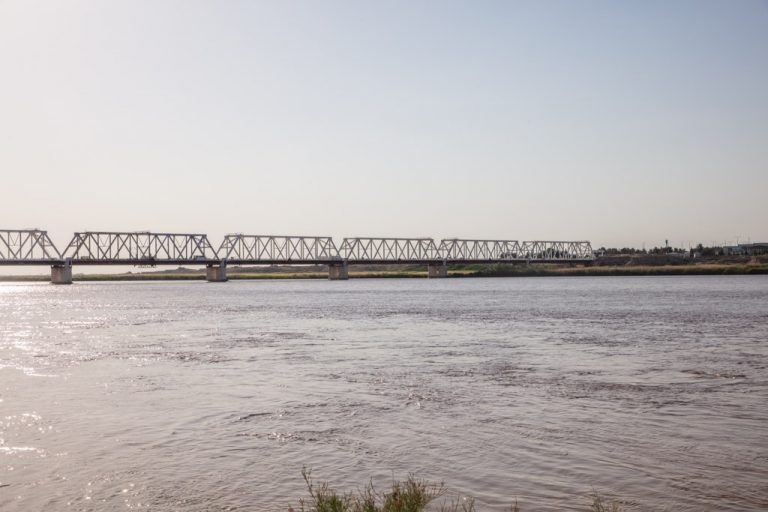



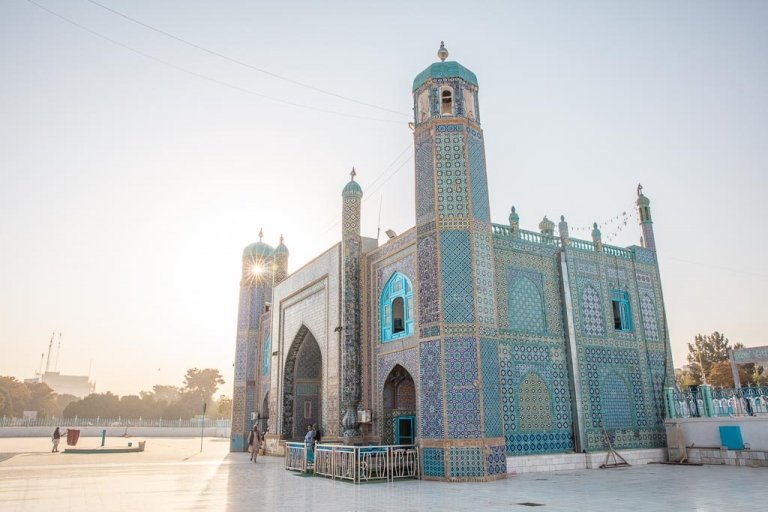
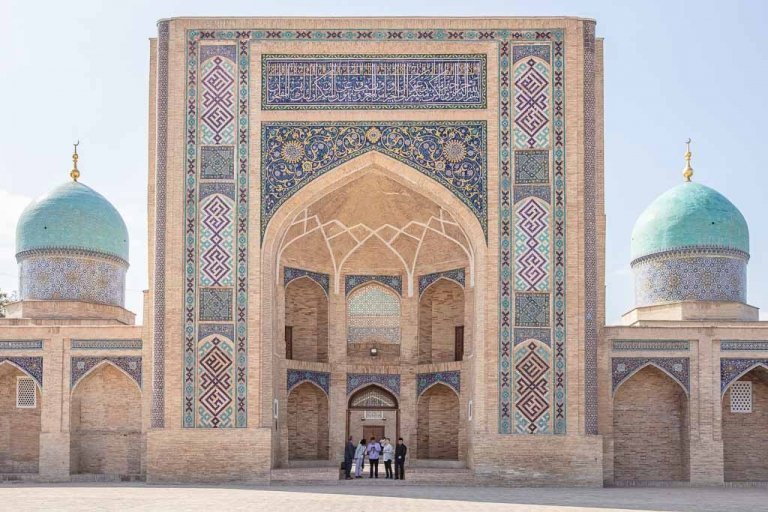

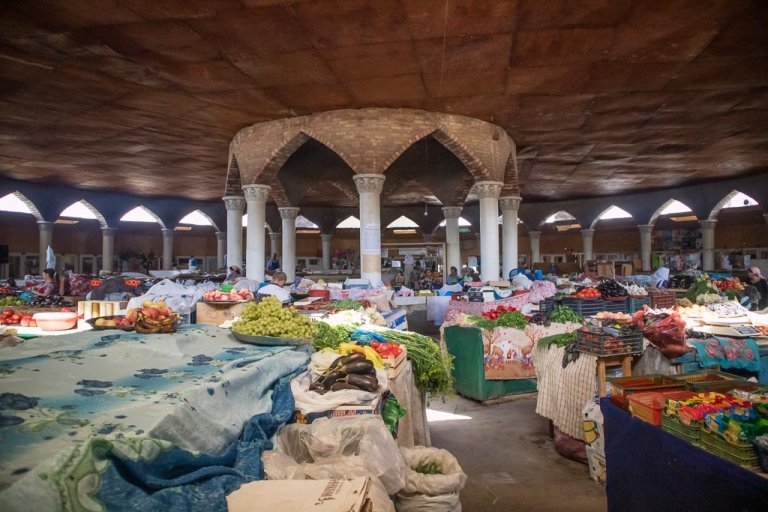


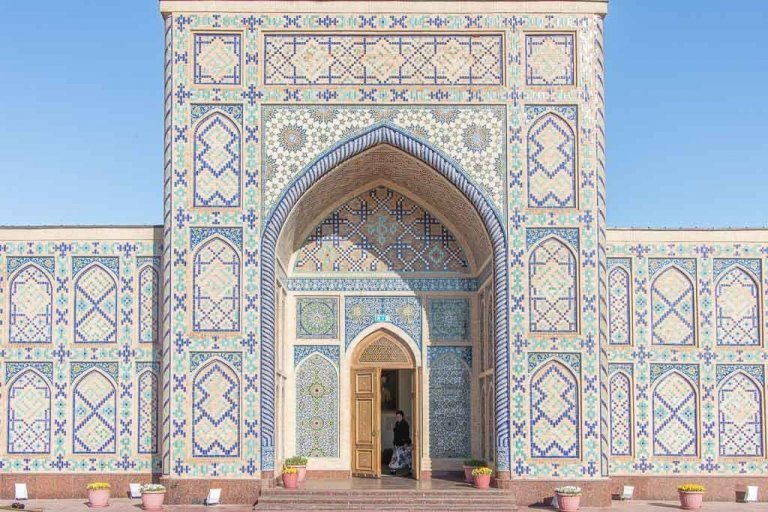
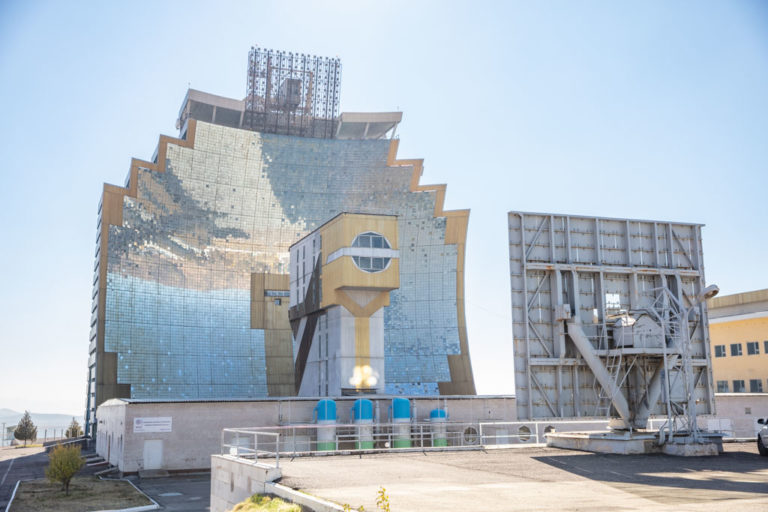

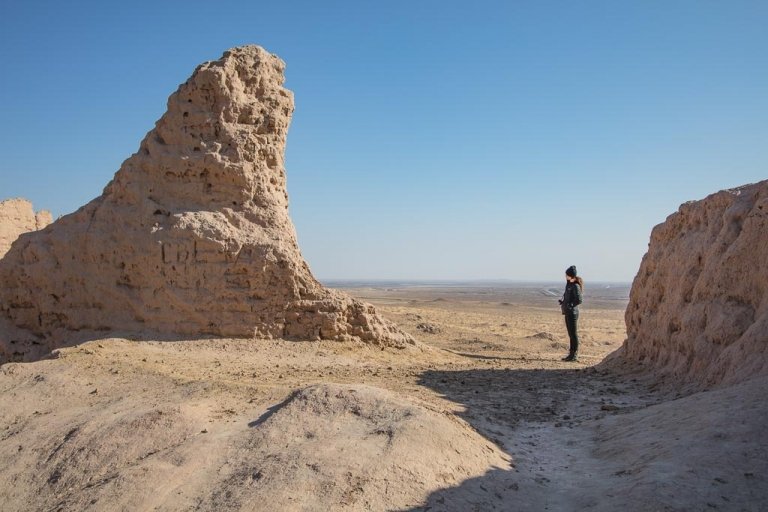

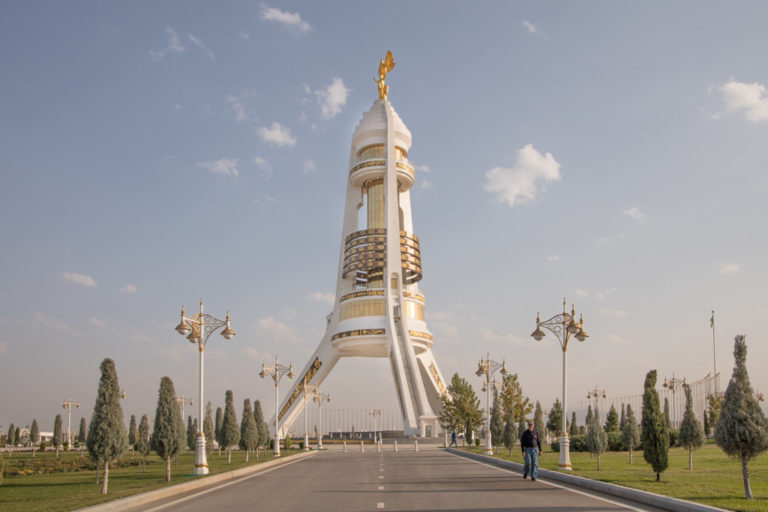
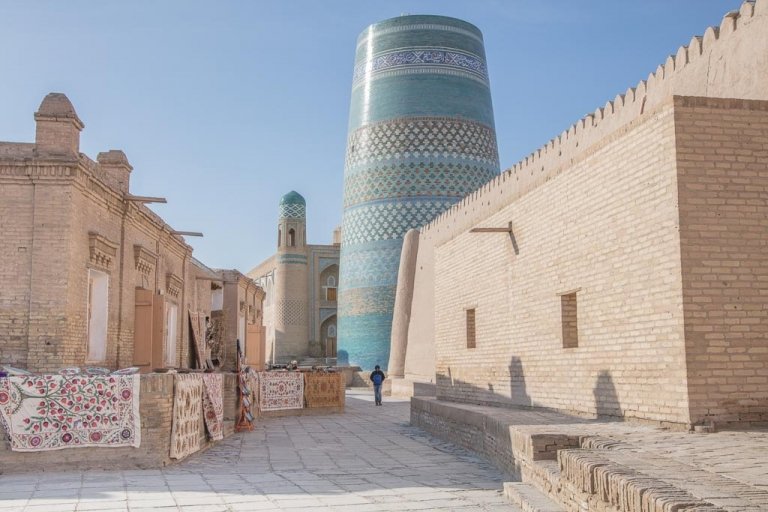


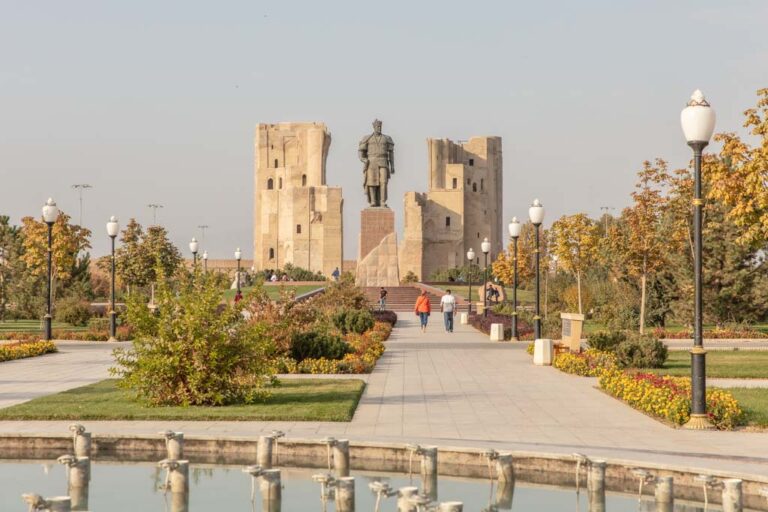
Malhalo. Radek. Plenty to do. Do you think. Solar cooker. In space. Portable. Possible. Cold cities. Glance from sun. A. Few. To each satellite. Condense compact Solar military heat. City. Thanks luv. Gerald w walker. Winger. 1/all. Areas.
Umm, what?
You can reach Parkent from Tashkent easy with bus 221 that start from Mashinasozlar metro station and drops you in Parkent bazar, 5 000 som one way, around 50min ride.
Hi Radek,
Thanks for the update on the marshrutka, hope you enjoyed Parkent!